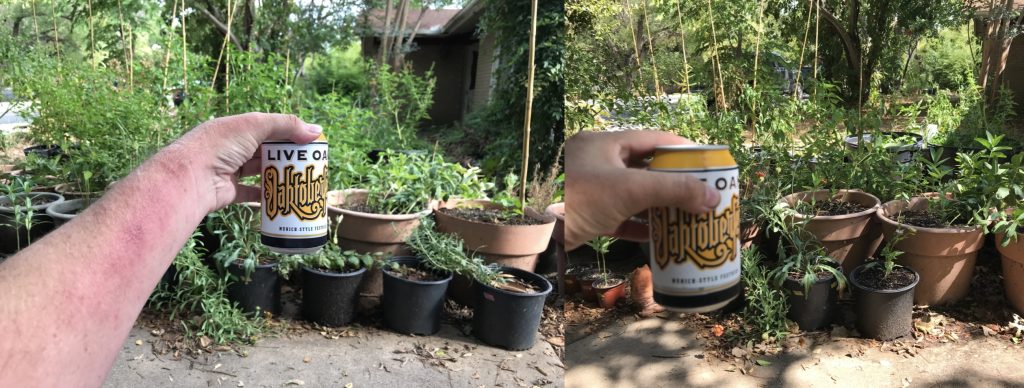Octoberfest beers are my favorite seasonal beer and I love Octoberfest season. In the US, Octoberfest beers begin appearing on the shelves in early September and remain available at least into early November. The actual German festival begins in mid-September, runs for two weeks, and ends on the first Sunday in October. German Octoberfest beers imported into the US are often of the Octoberfest Märzen type — malty, orangish-colored lagers around 5.5–6.0% ABV. However, you can also find imported Octoberfest beers in the ligher-colored festbier style. (Also note that German Octoberfests are almost always spelled with a “k” — Oktoberfest or Oktoberfestbier. Some US breweries also do this.) Of the German imports, Hacker-Pschorr — among the darkest and richest — is my favorite. However, as might be expected, there are plenty of German imports that are great and my preference is just a matter of opinion. Somewhat recently, US breweries have begun producing some spectacular Octoberfest lagers. These well-balanced beers taste great on a crisp fall evening.

It’s not a tent in Munich, but I like my beer garden. Despite the name, Live Oak’s Oaktoberfest does not have any oak character. My arm has some poison oak character in this photo, unfortunately.
The best Octoberfest beers are malty, without any caramel or biscuit notes — just a smooth maltiness that mostly comes from Munich malt. (10 °L). The malty character may be accentuated by dark Munich malt (20 °L), melanoidin, or aromatic malt. Also, some Vienna malt (6 °L) — which is intermediate in kilning between Pilsner malt (2 °L or lower) and the Munich malts — may be present. However, a fantastic Octoberfest can brewed from a grist if 100% Munich malt. Neutral hops — noble hops in the case of actual German beers — provide just enough bitterness to make a well-balanced beer. The beer is not sweet, but it isn’t dry either. It has just enough body to feel a little more filling than a Pilsner, but not by much. Festbier types, brewed with mostly Pils malt, are generally a bit drier. The level of carbonation is within the usual range of lager beers. Overall, the Märzen style of Octoberfest is a malty lager beer with a bit more color and “heft” than a Pilsner, and with less hop bitterness.
US craft brewers have came a long way when it comes to producing Octoberfest beers. In the late 1980s through the early 2000s, most US “Octoberfests” were amber colored ales made with crystal malt in the grist and often showing a strong biscuit malt character. Sadly, some breweries still produce this type of beer. Many of these were also over-hopped, based on the target style. The best US breweries, however, started making lager beers that aligned with the traditional Octoberfest Märzen style and now there are many great examples. I live in Texas and the regional breweries Live Oak, Karbach, and Real Ale all make excellent interpretations of the style. (For what it’s worth, Real Ale was never a real ale brewery in the sense of brewing cask conditioned ales. They make both ales and lagers, including Hans Pils — which is one of my “go to” beers.) From discussions on social media, many homebrewers report local and regional breweries near them producing fine examples.
For me, Octoberfests are an “indicator beer.” If a brewery or homebrewer can produce a nice Octoberfest, I have some confidence that the rest of their beers are decent. If you are brewing an Octoberfest, here is my advice. First, be fanatical about cleaning and sanitation. Even a hint of contamination — below the level that noticable off flavors are produced — can rob a malty beer of its malt flavor and aroma. Secondly, run an orderly fermentation — pitch enough yeast, aerate adequately, and hold the fermentation temperture in the proper range. Thirdly, if you are brewing an Octoberfest on the darker end of the scale, adjust your water chemistry. Make your water with just slightly more bicarbonate than the color would indicate is optimum. Not enough to throw your pH out of whack, just a bit. If you calculate residual alkalinity (RA), shoot for 1.3–1.4 for a beer that’s 13–15 SRM. Add calcium chloride such that you have 100–150 ppm calcium ions. Taste your treated water to ensure that it tastes good — and of course eliminate any chlorine compounds through carbon filtration or with Campden tablets first. And finally, use fresh, high-quality Munich malt.
With Octoberfest season winding down, winter warmers are up next. Prost!



Speak Your Mind